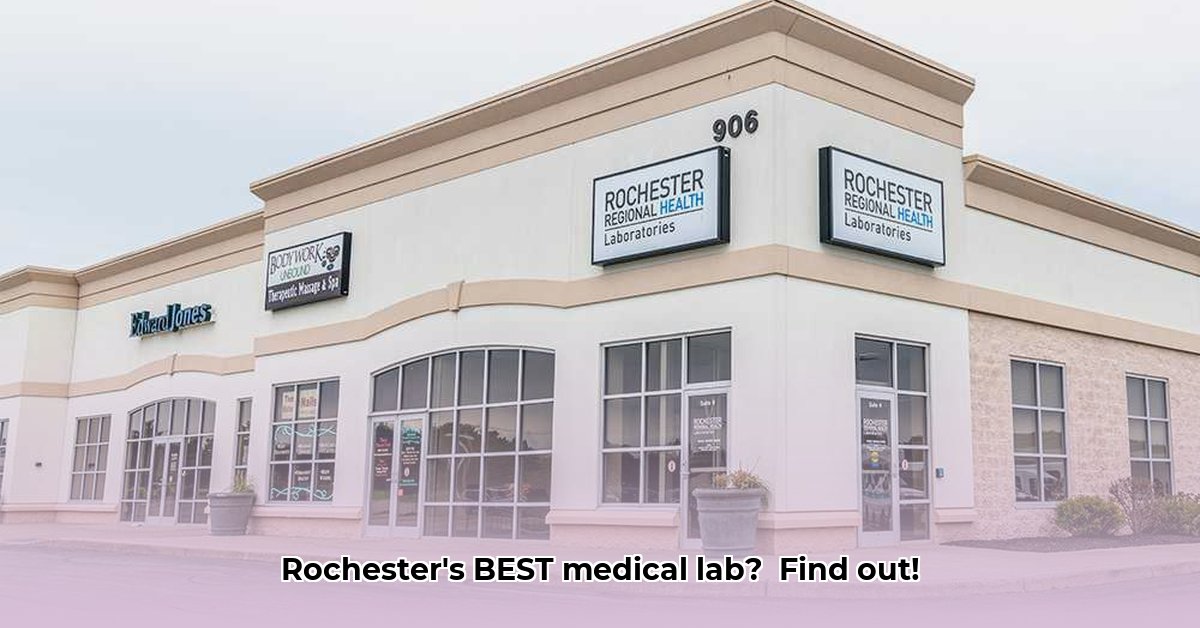
ACM Medical Laboratory Rochester: A Comprehensive Overview
ACM Medical Laboratory Rochester, a division of ACM Global Laboratories, provides a comprehensive suite of diagnostic services with over 35 years of experience. The lab serves a diverse client base, including individual physicians, major hospitals, and large employers, processing over 15 million clinical tests annually. Its strong reputation is evidenced by its College of American Pathologists (CAP) accreditation and NGSP (Glycohemoglobin) Level 1 certification. The lab operates a network of 32 patient service centers, ensuring convenient access for patients. This report analyzes ACM's operations, market position, risks, and strategic recommendations.
Operational Analysis: Strengths and Weaknesses
ACM's high volume of tests (15 million annually) and extensive network of patient service centers demonstrate significant operational capacity and reach. The CAP accreditation and NGSP certification underscore the lab's commitment to quality and advanced testing capabilities. However, scheduled closures during holidays present a potential disruption to service. Efficient specimen transportation is critical; any delay in delivery impacts diagnostic timelines and patient care.
Market Positioning: A Regional Leader
While precise market share data isn't publicly available, ACM's scale, reputation, and extensive client network suggest a substantial presence within the Rochester, NY, and broader US and Canadian markets. Their current geographical focus offers benefits in resource allocation but can limit potential expansion opportunities. Further market research is needed for a complete competitive analysis.
Risk Assessment Matrix
The following matrix outlines potential risks and proposed mitigation strategies:
| Risk Factor | Likelihood of Occurrence | Potential Impact | Mitigation Strategies |
|---|---|---|---|
| Specimen Shipping Delays | High | High | Implement real-time tracking systems, optimize shipping routes, partner with specialized transportation services. |
| Holiday Closures Impact on Ops | Moderate | Moderate | Develop comprehensive contingency plans; cross-train staff; utilize temporary staff during peak holiday periods. |
| Increased Competition | Moderate | High | Continuously innovate services; enhance marketing; strategically adapt to market changes. |
| Regulatory Changes | Moderate | High | Establish a robust compliance monitoring system; proactively adapt to new regulations through training and technological investments. |
| Technology Failures | Low | High | Implement robust data backup and recovery systems; invest in redundant equipment; conduct regular system maintenance and testing. |
Strategic Recommendations
For ACM Management: Short-term priorities include optimizing sample processing and transportation, particularly during holidays. Long-term strategies should focus on geographic expansion and investment in automation technology to increase throughput.
For Healthcare Providers: Improved communication regarding holiday closures and streamlined data sharing are critical for efficient collaboration. Long-term collaboration on integrated digital health platforms would enhance communication and data exchange.
For Patients: Proactive communication about holiday closures and access to online resources (patient portals) for test results and information would improve the patient experience. Investment in user-friendly online education resources will enhance patient understanding.
Regulatory Compliance
Maintaining CAP accreditation and adhering to HIPAA regulations are paramount for preserving the lab's reputation and avoiding legal repercussions. A robust compliance program is essential for ongoing adherence to regulatory guidelines.
Conclusion
ACM Medical Laboratory Rochester is a significant player in the Rochester healthcare landscape, with a strong reputation for quality and a wide service network. Addressing operational challenges, investing in technology, and proactively managing risks will be crucial for securing future growth and continuing to serve its clients effectively. The lab’s future success hinges on adapting to industry evolution and consistently exceeding patient and provider expectations.